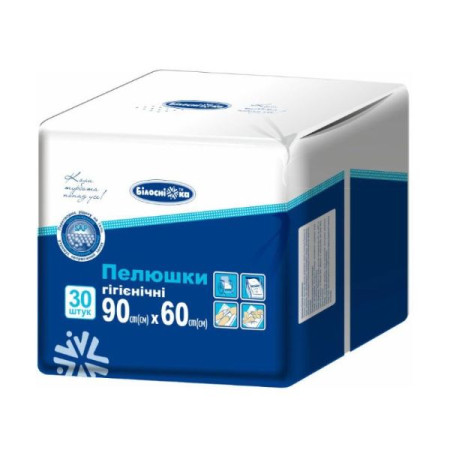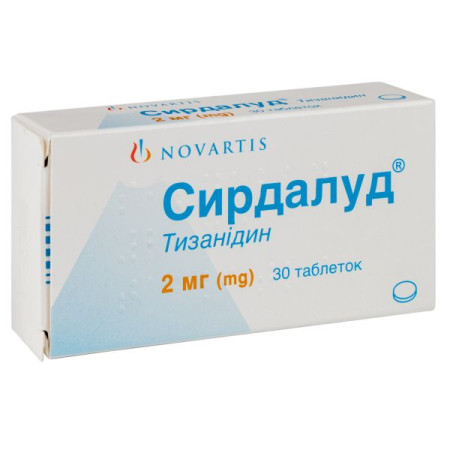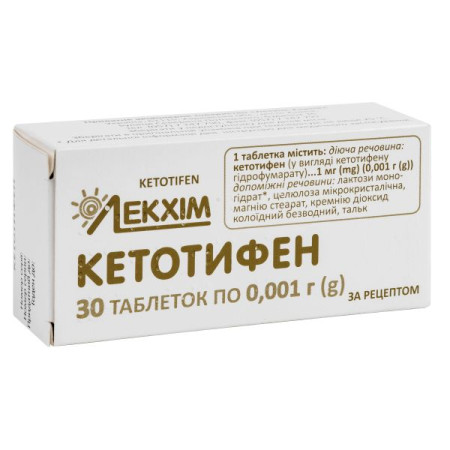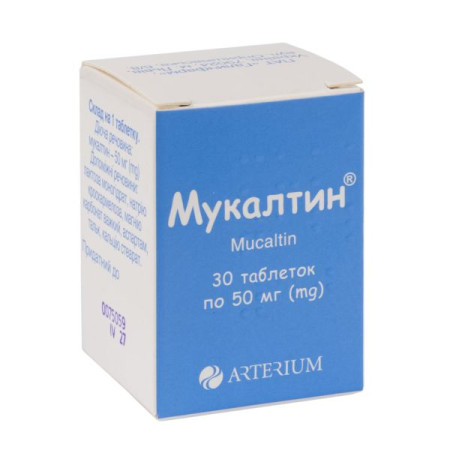Valtrex film-coated tablets 500 mg blister No. 10

Instructions for Valtrex film-coated tablets 500 mg blister No. 10
Composition
active ingredient: valacyclovir;
1 tablet contains 500 mg of valacyclovir (as valacyclovir hydrochloride);
excipients: microcrystalline cellulose, crospovidone, povidone, magnesium stearate, colloidal anhydrous silicon dioxide, carnauba wax, white dye concentrate (YS-1-18043): hypromellose, titanium dioxide (E 171), polyethylene glycol 400, polysorbate 80.
Dosage form
Film-coated tablets.
Main physicochemical properties: white, film-coated, elongated biconvex tablets with a white or almost white core, without a score, engraved with GX CF1.
Pharmacotherapeutic group
Direct-acting antiviral drugs. ATX code J05A B11.
Pharmacological properties
Pharmacodynamics
Valacyclovir is an antiviral drug, the L-valine ester of acyclovir, which is an analogue of a purine (guanine) nucleoside. In the human body, valacyclovir is rapidly and almost completely converted to acyclovir and valine by valacyclovir hydrolase. Acyclovir is a specific inhibitor of herpes viruses with in vitro activity against herpes simplex viruses types I and II, Varicella zoster virus, cytomegalovirus, Epstein-Barr virus and human herpes virus type VI. Acyclovir inhibits viral DNA synthesis immediately after phosphorylation and conversion to the active form of acyclovir triphosphate. The first stage of phosphorylation requires the activity of a virus-specific enzyme. For herpes simplex virus, Varicella zoster virus and Epstein-Barr virus, this is viral thymidine kinase (TK), which is present only in cells infected with the virus. Partial selectivity of phosphorylation is preserved in cytomegalovirus infection and is mediated through the phosphotransferase gene product UL97. Activation of acyclovir by a specific viral enzyme largely explains its selectivity.
The process of phosphorylation of acyclovir (conversion from mono- to triphosphate) is carried out by cellular kinases. Acyclovir triphosphate competitively inhibits viral DNA polymerase and is incorporated into viral DNA, which leads to obligate (complete) chain termination, cessation of DNA synthesis, and therefore to blocking viral replication.
Resistance is due to a deficiency in the viral thymidine kinase, which leads to excessive proliferation of the virus in the host. Sometimes reduced susceptibility to acyclovir is due to the emergence of virus strains with a disrupted structure of the viral TC or DNA polymerase. The virulence of these variants of the virus resembles that of its wild-type strain.
Extensive monitoring of clinical isolates of herpes simplex virus and Varicella zoster virus in patients treated with acyclovir has made it possible to find out that in patients with normal immunity, a virus with reduced sensitivity to acyclovir is extremely rare and infrequently manifests itself only in patients with severe immune disorders, for example, after organ transplantation or in bone marrow recipients, during chemotherapy for malignant neoplasms and HIV-infected patients.
Valtrex accelerates the cessation of pain in the treatment of herpes zoster, reduces the duration of pain syndrome, as well as the number of patients with zoster-associated pain, including acute and postherpetic neuralgia.
Prevention of cytomegalovirus infection with Valtrex reduces the risk of acute transplant rejection (in patients after kidney transplantation), the incidence of opportunistic infections and other infections caused by the herpes virus (herpes simplex virus and Herpes zoster virus).
Pharmacokinetics
Absorption
After oral administration, valaciclovir is well absorbed, rapidly and almost completely converted to acyclovir and valine. This conversion, apparently, occurs with the help of the enzyme valaciclovir hydrolase, isolated from the human liver. The bioavailability of acyclovir when taking 1 g of valaciclovir is 54% and is not reduced by food intake. The pharmacokinetics of Valtrex are not dose-dependent. The rate and extent of absorption decrease with increasing dose, leading to a less proportional increase in Cmax within the therapeutic dose range and a decrease in bioavailability when using doses greater than 500 mg. The average peak concentration of acyclovir is 10-37 μmol (2.2-8.3 μg / ml) after a single dose of 250-2000 mg of valaciclovir in healthy volunteers with normal renal function, and the median time to reach this concentration is 1-2 hours. Peak plasma concentrations of valacyclovir are only 4% of those of acyclovir, occurring on average within 30-100 minutes and declining below measurable levels after 3 hours. The pharmacokinetics of valacyclovir and acyclovir are similar after single and repeated administration.
Distribution
The binding of valaciclovir to plasma proteins is very low - 15%. Penetration into cerebrospinal fluid (CSF), determined by the ratio of CSF/plasma AUC, is approximately 25% for acyclovir and the metabolite 8-hydroxyacyclovir and 2.5% for the metabolite 9-carboxymethoxymethylguanine.
After oral administration, Valtrex is converted to acyclovir and L-valine by first-pass metabolism in the intestine and/or liver. To a small extent, acyclovir is converted to the metabolites 9-carboxymethoxymethylguanine by alcohol and aldehyde dehydrogenase and to 8-hydroxyacyclovir by aldehyde oxidase. Approximately 88% of the total plasma exposure is due to acyclovir, 11% to 9-carboxymethoxymethylguanine, and 1% to 8-hydroxyacyclovir. Neither Valtrex nor acyclovir are metabolized by cytochrome P450 enzymes.
Breeding
The half-life of acyclovir after single and multiple doses of valaciclovir in patients with normal renal function is approximately 3 hours. Valaciclovir is excreted in the urine mainly as acyclovir (more than 80% of the dose) and its metabolite 9-carboxymethoxymethylguanine.
Special patient groups
In patients with end-stage renal failure, the half-life of acyclovir is approximately 14 hours.
Herpes zoster virus and herpes simplex virus do not significantly alter the pharmacokinetics of acyclovir and valacyclovir following oral administration of Valtrex.
In a study of the pharmacokinetics of valaciclovir and acyclovir during late pregnancy, the area under the acyclovir concentration-time curve in the plateau phase after administration of valaciclovir at a dose of 1000 mg was approximately 2 times higher than after administration of acyclovir orally at a dose of 1200 mg per day.
In patients with HIV infection, the pharmacokinetic characteristics of acyclovir after single or multiple doses of 1000 mg or 2000 mg of Valtrex did not change compared to those in healthy subjects.
In organ transplant recipients receiving valaciclovir at a dose of 2000 mg 4 times / day, the maximum concentration of acyclovir was equal to or greater than that in healthy volunteers receiving the same dose of the drug, and the daily area under the "concentration/time" curve was significantly higher.
Indication
Treatment of shingles (Herpes zoster).
Treatment of infections of the skin and mucous membranes caused by the herpes simplex virus, including primary and recurrent genital herpes.
Treatment of labial herpes (cold sores).
Preventive treatment (suppression) of recurrences of skin and mucous membrane infections caused by the herpes simplex virus, including genital herpes.
Reducing the risk of transmitting the genital herpes virus to a healthy partner when using Valtrex as suppressive therapy in combination with practicing safe sex.
Prevention of cytomegalovirus infection and disease after organ transplantation.
Contraindication
Valtrex is contraindicated in patients with hypersensitivity to valacyclovir, acyclovir, or any component of the drug.
Interaction with other medicinal products and other types of interactions
No clinically significant forms of interaction were identified.
Acyclovir is excreted mainly unchanged in the urine by active tubular secretion. Any drugs administered simultaneously that affect this mechanism of excretion may increase the concentration of acyclovir in the blood plasma after the use of Valtrex. After taking Valtrex at a dose of 1 g with cimetidine and probenecid, which block tubular secretion, the area under the "concentration/time" curve of acyclovir increases and its renal clearance decreases, but there is no need to change the dose given the wide therapeutic index of acyclovir.
For patients receiving higher doses of Valtrex (4 g or more per day), caution should be exercised when co-administering drugs that compete with acyclovir for elimination pathways, as this may lead to increased plasma levels of one or both drugs and their metabolites. Concomitant use with mycophenolate mofetil (an immunosuppressive drug used after organ transplantation) increases plasma levels of acyclovir and the inactive metabolite of mycophenolate mofetil.
Caution should also be exercised (with monitoring of changes in renal function) when prescribing high doses of Valtrex (4 g or more) and other drugs that affect renal function (e.g. cyclosporine, tacrolimus).
Application features
Hydration: Adequate fluid intake should be maintained in patients at increased risk of dehydration, especially the elderly.
Use in patients with renal impairment and the elderly
Acyclovir is excreted by the kidneys, and therefore the dose of valaciclovir should be reduced in patients with impaired renal function (see section "Method of administration and dosage"). Elderly patients have reduced renal function and require dose adjustment. Patients with impaired renal function and elderly patients are at increased risk of developing neurological complications, they need careful monitoring for these effects. According to reports, such reactions are reversible in most cases after discontinuation of treatment (see section "Adverse reactions").
There are no data on the use of higher doses of Valtrex (4 mg or more per day) in patients with liver disease, so caution should be exercised when prescribing higher doses of Valtrex to such patients. Specific studies of the use of Valtrex in liver transplantation have not been conducted; however, prophylaxis with high doses of acyclovir has been shown to reduce the incidence of cytomegalovirus infection and disease.
Use in the treatment of herpes zoster
When treating patients, especially those who are immunocompromised, clinical response should be closely monitored. If the response to treatment is inadequate, intravenous antiviral therapy is recommended. Patients with complicated herpes zoster, such as those with visceral involvement, viral dissemination, motor neuropathy, encephalitis, and cerebrovascular disorders, should be treated with intravenous antiviral agents.
In addition, immunocompromised patients who have herpetic ocular lesions or are at high risk of disease dissemination and visceral organ involvement should be treated with intravenous antiviral agents.
Reducing transmission of genital herpes virus
Suppressive therapy with Valtrex reduces the risk of transmission of genital herpes. It does not cure herpes infection, nor does it completely eliminate the risk of transmission of the virus. In addition to Valtrex therapy, it is recommended that patients practice safe sex.
Use in cytomegalovirus infection
Efficacy data from the treatment of patients at high risk of CMV infection for prophylaxis after organ transplantation suggest that valaciclovir should be used in these patients if valganciclovir or ganciclovir has been discontinued for safety reasons. The high doses of valaciclovir required for CMV prophylaxis may be associated with a higher incidence of adverse reactions, including nervous system disorders, compared with the lower doses used for other indications. Patients should be closely monitored for renal function and the dose adjusted accordingly.
Ability to influence reaction speed when driving vehicles or other mechanisms
There are no clinical trial data on this issue, and the pharmacology of valacyclovir does not suggest any adverse effects. However, when assessing a patient's ability to drive or operate machinery, the clinical status and the side effect profile of Valtrex should be taken into account.
Use during pregnancy or breastfeeding
Fertility
Animal studies have shown that Valtrex had no effect on fertility. However, high parenteral doses of acyclovir caused testicular effects in rats and dogs.
Clinical studies investigating the effect of Valtrex on human fertility have not been conducted, however, after 6 months of daily use of acyclovir at a dose of 400 mg to 1 g, no changes in sperm count, morphology, or motility were observed.
Pregnancy
Data on the use of Valtrex during pregnancy are limited. Valtrex should be used in pregnant women only if the potential benefit to the mother outweighs the potential risk to the fetus. There are documented data from a registry of pregnant women exposed to valaciclovir or any form of acyclovir (the active metabolite of valaciclovir): 111 and 1,246 women, respectively (29 and 756 pregnant women, respectively, exposed to valaciclovir or any form of acyclovir in the first trimester of pregnancy). According to the results of this observation, no increase in birth defects in newborns was observed among pregnant women taking acyclovir compared with the general population of such patients. Any birth defect was not of a unique or persistent nature that could be attributed to a single cause. Given the small number of pregnant women who were observed, a reliable and definitive conclusion about the safety of valaciclovir in pregnancy cannot be made (see section "Pharmacodynamics").
Breast-feeding
Valtrex should be administered with caution to breastfeeding women only if clinically necessary. However, acyclovir has been used to treat newborns with herpes simplex infections by intravenous administration at doses of 30 mg/kg/day.
Method of administration and doses
Treatment of herpes zoster: adults should be prescribed 1000 mg (2 tablets) 3 times a day for 7 days.
Treatment of infections caused by the herpes simplex virus
Patients with normal immunity (adults): 500 mg (1 tablet) 2 times a day.
For recurrent cases, treatment should last 3 or 5 days. In the case of a primary course, which may be more severe, treatment should be continued for 5 to 10 days. Treatment should be started as early as possible. For recurrent forms of infections caused by the herpes simplex virus, the ideal would be to use the drug in the prodromal period or immediately after the first symptoms appear. Valtrex can prevent the development of lesions in recurrent infections caused by the herpes simplex virus, provided that treatment is started immediately after the first symptoms of the disease appear.
Alternatively, for the treatment of cold sores (herpes labialis), the effective dose of Valtrex is 2000 mg (4 tablets) 2 times a day for 1 day. The second dose should be taken approximately 12 hours (not earlier than 6 hours) after the first dose. With this dosage regimen, the duration of treatment should not exceed 1 day, as it has been proven that longer use does not increase the clinical effectiveness of the treatment. Treatment should be started at the first early symptoms of cold sores (tingling, itching or burning sensation in the lip area).
Preventive treatment (suppression) of recurrences of infections caused by the herpes simplex virus:
Patients with normal immunity (adults) should be prescribed 500 mg (1 tablet) once a day. Patients with immunodeficiency (adults) should be prescribed a dose of 500 mg (1 tablet) twice a day.
Reducing transmission of the genital herpes virus.
For adult heterosexuals with normal immunity who have 9 or fewer exacerbations per year, Valtrex should be prescribed to the infected partner at a dose of 500 mg once daily.
There is no data on the reduction of genital herpes virus transmission in other patient populations.
Prevention of cytomegalovirus infection and disease after organ transplantation.
Adults and children over 12 years of age: Valtrex is prescribed at a dose of 2000 mg (4 tablets) 4 times a day, as early as possible after transplantation. In renal failure, the dose is reduced (see "Dosage in renal impairment"). The duration of treatment is usually 90 days, but may be extended for high-risk patients.
Dosage in renal impairment
Valacyclovir should be administered with caution to patients with impaired renal function. Adequate hydration should be maintained.
The dosage regimen depends on creatinine clearance and indications (see table below).
| Therapeutic indication | Creatinine clearance, ml/min | Valtrex dosage |
| Herpes zoster (treatment) in adult patients with normal immunity and patients with immunodeficiency | 50 and over 30-49 10-29 less than 10 | 1 g 3 times a day 1 g 2 times a day 1 g once a day 500 mg once daily |
| Herpes simplex (treatment) adult patients with normal immunity | 30 and over less than 30 | 500 mg 2 times a day 500 mg once daily |
| Herpes labialis (treatment) adult patients with normal immunity | 50 and over 30-49 10-29 less than 10 | 2 g 2 times a day 1 g 2 times a day 500 mg 2 times a day 500 mg 1 time |
| Herpes simplex (prevention) adult patients with normal immunity | 30 and over less than 30 | 500 mg once daily 250* mg once daily |
adult patients with immunodeficiency | 30 and over less than 30 | 500 mg 2 times a day 500 mg once daily |
| Prevention of cytomegalovirus infection | 75 and over 50-75 25-50 10 -25 Less than 10 or dialysis | 2 g 4 times a day 1.5 g 4 times a day 1.5 g 3 times a day 1.5 g 2 times a day 1.5 g once a day |
* - use if tablets of the drug are available in a dose of 250 mg.
Patients on intermittent hemodialysis are recommended to use the same doses of Valtrex as those used in patients with creatinine clearance less than 15 ml/min. Doses should be administered after hemodialysis.
Creatinine clearance should be monitored regularly, especially during periods when renal function may change rapidly, such as immediately after transplantation, and the dose of Valtrex should be adjusted accordingly.
Dosage in hepatic impairment
There is no need to change the dose in patients with mild or moderate cirrhosis (liver synthesis function is preserved). Pharmacokinetic indicators in late stages of cirrhosis (with impaired liver synthesis function and signs of portal block) indicate that there is no need to change the dosage, but clinical experience is limited.
For the use of higher doses (4000 mg and more) per day, see the section "Special instructions for use".
The dose of Valtrex requires adjustment to avoid possible renal impairment (see “Dosage in renal impairment”).
It is necessary to maintain an adequate level of hydration of the body.
Children
It is used in children aged 12 years and older for the prevention of cytomegalovirus infection and disease after organ transplantation.
Overdose
Symptoms
Acute renal failure and neurological symptoms, including confusion, hallucinations, agitation, decreased mental capacity, and coma, have been reported with valaciclovir overdose. Nausea and vomiting may occur. Caution should be exercised when administering valaciclovir to patients with renal impairment and the elderly, in whom the dose was not reduced appropriately.
Treatment
Patients should be closely monitored for signs of toxicity. Hemodialysis significantly accelerates the removal of acyclovir from the blood and may therefore be considered the optimal treatment in the event of symptomatic overdose.
Adverse reactions
The most common adverse reactions reported in clinical trials were headache and nausea. More serious adverse reactions included reports of thrombotic thrombocytopenic purpura/hemolytic uremic syndrome, acute renal failure, and neurological disorders.
The adverse reactions listed below are classified by system organ class and frequency of occurrence. They are divided into the following categories according to frequency of occurrence:
very common (≥ 1/10), common (≥ 1/100 and < 1/10), uncommon (≥ 1/1000 and < 1/100), rare (≥ 1/10000 and < 1/1000), very rare (< 1/10000).
According to clinical studies
From the nervous system
Common: headache.
From the digestive tract
Common: nausea.
According to post-licensing supervision data
Blood and lymphatic system disorders
Very rare: leukopenia, thrombocytopenia.
Leukopenia is mainly observed in patients with immunodeficiency.
On the part of the immune system
Very rare: anaphylaxis.
From the nervous system and psyche
Rare: dizziness, confusion, hallucinations, decreased mental abilities.
Very rare: agitation, tremor, ataxia, dysarthria, psychotic symptoms, convulsions, encephalopathy, coma.
The above symptoms are reversible in most cases and are observed mainly in patients with renal insufficiency or other predisposing factors (see section "Special instructions for use"). In patients after organ transplantation who receive Valtrex for the prevention of cytomegalovirus infection in high doses (8 g per day), neurological reactions occur more often than in patients receiving lower doses.
Respiratory and thoracic disorders
Uncommon: dyspnoea.
From the digestive tract
Rare: abdominal discomfort, vomiting, diarrhea.
Hepatobiliary system
Very rare: reversible increase in liver function tests.
This is occasionally described as hepatitis.
Skin and subcutaneous tissue disorders
Uncommon: rash, including photosensitivity reactions.
Rare: itching.
Very rare: urticaria, angioedema.
Renal and urinary disorders
Rare: renal dysfunction.
Very rare: acute renal failure, kidney pain, haematuria (often associated with other renal dysfunction).
Kidney pain may be associated with kidney failure.
Acyclovir precipitates have been reported in the renal tubules. Adequate hydration of the patient should be ensured during treatment (see section 4.4).
Other: There have been reports of renal failure, microangiopathic hemolytic anemia, and thrombocytopenia (sometimes in combination) in severely immunocompromised patients, particularly those with advanced HIV disease, who received high doses (8000 mg/day) of valaciclovir for prolonged periods in clinical trials. These events have also been observed in patients with the same conditions who were not treated with valaciclovir.
Expiration date
3 years.
Storage conditions
Store in the original packaging at a temperature not exceeding 30 ° C. Keep out of the reach of children.
Packaging
10 tablets in a blister, 1 blister in a cardboard box; or 6 tablets in a blister, 7 blisters in a cardboard box; or 14 tablets in a blister, 3 blisters in a cardboard box.
Vacation category
According to the recipe.
Producer
Glaxo Wellcome S.A., Spain.
Location of the manufacturer and its business address
Glaxo Wellcome S.A., Avenida de Extremadura 3, Pol. Ind. Allendeduero, 09400 Aranda de Duero, Burgos, Spain
Address
GlaxoSmithKline Pharmaceuticals S.A., 189, Grunwaldska Street, 60-322 Poznań, Poland
There are no reviews for this product.
There are no reviews for this product, be the first to leave your review.
No questions about this product, be the first and ask your question.


















